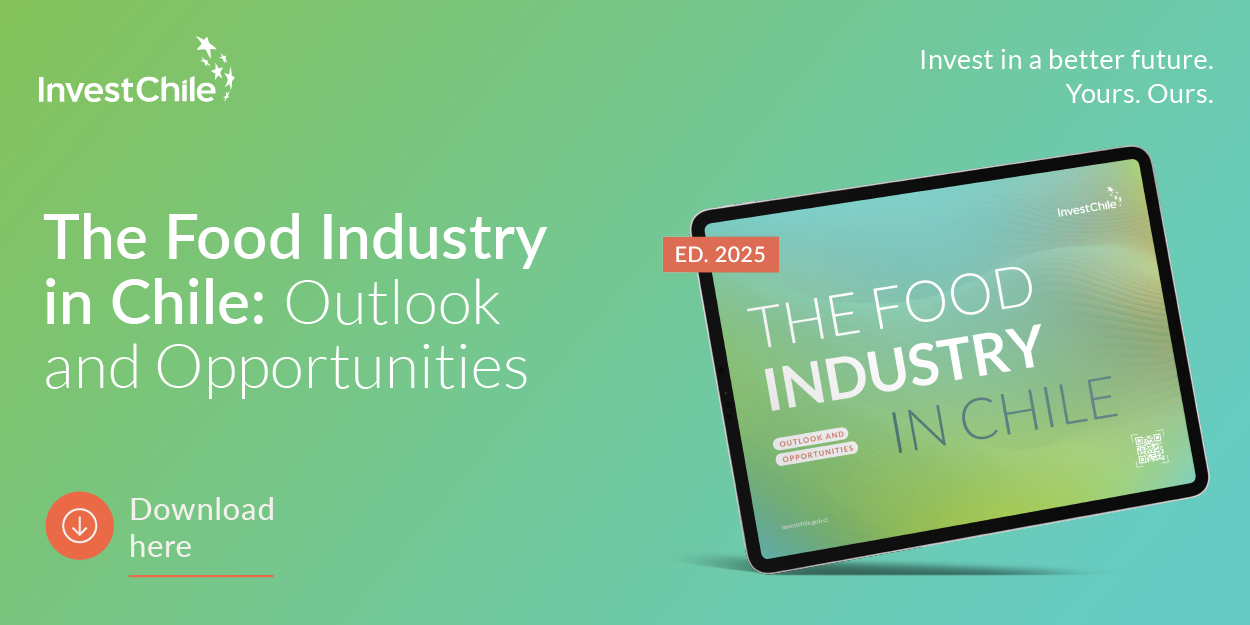Innovation in seafood products is driving healthy eating, while Chile’s exports in the sector
are reaching record levels.

With a coastline stretching over 2,600 miles, including the continental coastline and southern archipelagos, Chile is home to one of the world’s largest reserves of marine and aquatic resources, thanks in part to the Humboldt Current. However, despite multiple efforts to promote the industry, the consumption of seafood within the country has never been significant.
According to an article in Chilean publication Emol, Chileans eat just 15.8 kilograms per capita per year, considerably below the global average of 22 kilograms. Now, driven by new trends in wellness and consumption, the industry and academia are working together to position seafood as a sustainable nutrition solution and an economic development opportunity.
This effort, bolstered by innovative initiatives, not only aims to increase domestic consumption but also seeks to strengthen Chile’s role in international markets.
Source of life and nutrition
There is international consensus that seafood is essential for global food and nutrition security. Javier Villanueva, the UN Food and Agriculture Organization’s (FAO) Senior Fishery and Aquaculture Officer for Latin America and the Caribbean, emphasizes that fishery and aquaculture products are fundamental to the livelihoods of approximately 85 million people.
«They are a significant source of proteins and nutrients, which contributes to food and nutrition security. Transitioning to sustainable food systems mitigates climate change, protects biodiversity, and ensures better nutrition, improving rural quality of life, creating jobs, reducing inequalities, and driving the blue transformation of aquatic food systems,» he said.
He explains that the FAO is promoting various “Blue Transformation” projects to promote innovative approaches that expand the contribution of aquatic food systems to food security, nutrition, and affordable healthy diets.
In Chile, for instance, the Coastal Marine Governance project is underway, which aims to strengthen governance and management to advance the conservation and sustainable, resilient use of the country’s marine ecosystems. The project is implemented by the FAO, with funding from the Global Environment Facility (GEF), together with Chile’s Ministry of the Environment, the Undersecretariat for Fisheries and Aquaculture (Subpesca) and the National Fisheries and Aquaculture Service (Sernapesca).
«All this work enables further progress toward better production, a healthier environment, improved nutrition, and better lives, leaving no one behind,» said Villanueva.
Regarding the nutritional aspect, Karen Basfi-Fer, Director of Universidad de Chile’s School of Nutrition and Dietetics, highlights the high omega-3 content in foods like fish and seaweed.
She notes that the availability of seafood products in Chile has improved, particularly frozen and canned fish, including low-cost options like mackerel, which could help promote widespread consumption. The key, in her view, lies in teaching people how to prepare these products in a simple way.
Driven by innovation
Chile’s food industry has made significant progress in creating innovative products that not only meet nutritional demands, but also satisfy sustainability and convenience requirements.
«Chile has developed innovations ranging from ready-to-eat foods to technological solutions that improve process efficiency, enabling seafood products to be positioned as the food source of the future,» says Graciela Urrutia, manager of the Transforma Alimentos strategic program.
Among the most notable breakthroughs are the development of functional products, such as gourmet cochayuyo (seaweed) preserves and flours made from fishery by-products, as well as plant-based foods like burgers and sausages that incorporate seaweed.
Sustainable technologies also stand out, such as cultivating seaweed in salmon farms. This approach enables nitrogen to be absorbed from salmon waste, helping to reduce water pollution, explains Dr. Basfi-Fer.
The incorporation of seaweed in products aligns with global trends toward healthy and sustainable consumption. «These foods are rich in iodine, amino acids, and essential fatty acids, which have helped them carve out a niche in the market,» says Jean Paul Veas, Executive Director of the Food Innovation Technology Center (CeTA).
According to Veas, another key strategy to boost consumption is education. «Aligning public and private efforts to close gaps is crucial. Integrating innovative products into programs like school meals and promoting affordable recipes can make a real difference.»
One example of this educational effort is the “Nutriéndome del mar” (Nourishing myself from the sea) guide created by Universidad de Concepción, which highlights the benefits of 19 marine species and provides practical recipes.
Rising exports
On the international stage, Chilean seafood exports have shown consistent growth over the past decade. Salmon, for instance, accounted for 69% of all seafood products exported in 2023. North America and Asia are the main destination markets for products such as fresh and frozen fish, as well as fish meal.
According to figures from Transforma Alimentos, based on data from Chile’s Central Bank and Customs, salmon exports rose from US$2.8 billion in 2013 to over US$6 billion in 2023. Meanwhile, the compound annual growth rate (CAGR) for fresh and frozen fish stood at 6% in 2023, with exports increasing from more than US$3 billion in 2013 to over US$7 billion in 2023. Other noteworthy products include shellfish, crustaceans, and more recently, seaweed.
«The international market has recognized the quality of Chilean seafood products. The integration of emerging technologies, such as biotechnology and artificial intelligence, are helping to address productivity, efficiency, and traceability challenges,» notes Graciela Urrutia, from Transforma Alimentos.
Blue future
Sustainability and the circular economy are fundamental pillars for the development of the seafood sector. The valorization of fishery by-products and the incorporation of environmentally responsible practices are key trends driving the industry’s growth.
For Chile, the challenge lies in balancing the richness of its marine resources with increased domestic consumption and continuing to position itself as a key player in international markets, while also promoting sustainability and driving technological innovation at every stage of the supply chain.
Do you want to find out more about investment opportunities in Chile’s food industry? Visit our website or contact us here.



%2017.11.51.png)

